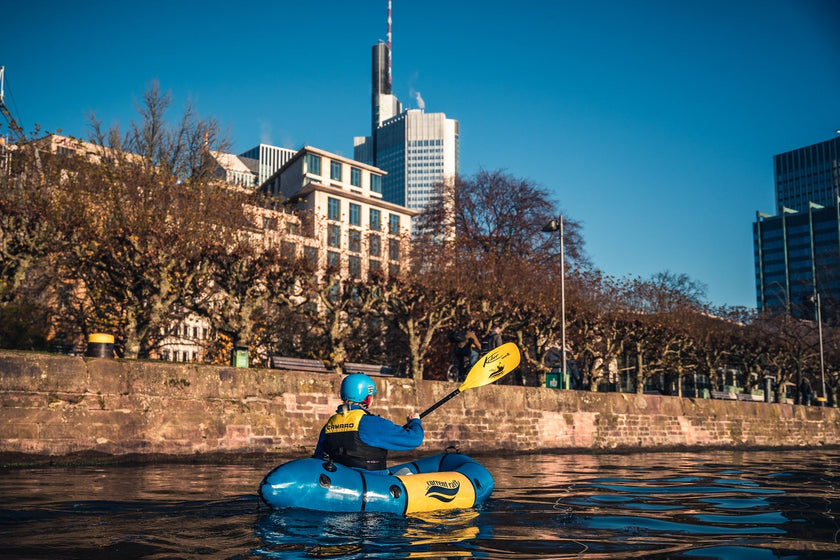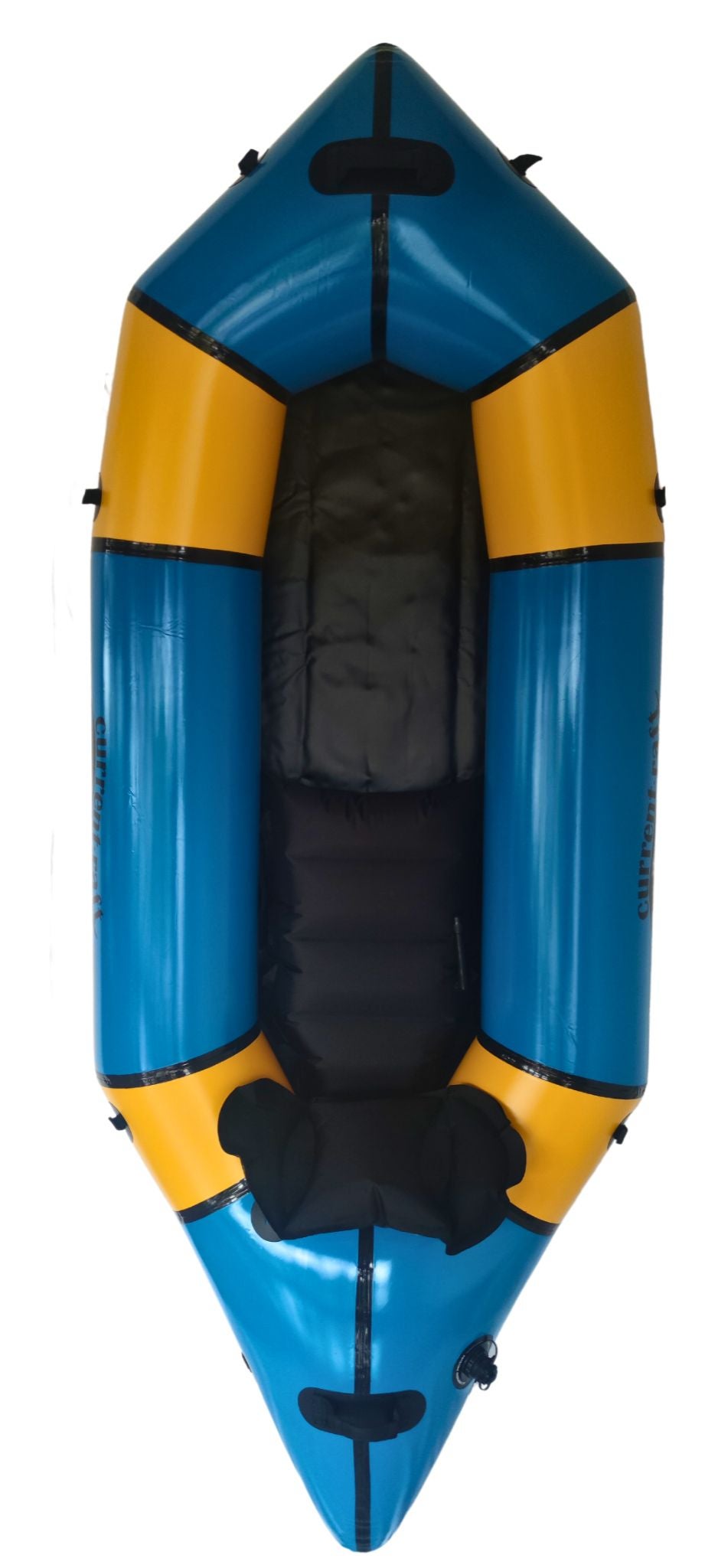Current-Raft Shoreline
























Description
Do you enjoy exploring?
Do you love being out and about independently in nature, off the beaten path?
Then our packrafts from the Current-Raft Shoreline series are the right companion for you.
Product information
Our extra light packrafts from the Shoreline series fit in any backpack or on the luggage rack. They transform obstacles into waterways and can be used very flexibly. Thanks to the high payload and stability, as well as easy handling, hiking, camping trips and even cycling tours can be combined with paddling. Thanks to the extra stable base, the packraft can also reliably master lighter whitewater passages (WWII) with ground contact. This means that fewer portages are necessary when hiking along rivers. Two grab or carrying handles are also installed. These make putting them on or carrying them very easy and pleasant. Our Shoreline series is available in 8 different versions from 200cm in length.
Dimensions (ascending order according to version)
- External lengths: 200cm/220cm/235cm/245cm/255cm
- Inner length: 112cm/120cm/135cm/145cm/155cm
- External width: 87cm/94cm (all lengths from 220cm)
- Inside width: 37cm (all lengths)
- Hose diameter: 25cm/28cm (all lengths from 220cm)
- Load capacity: 100kg/150kg/160/170kg/180kg
- Pack size (approx.): 10l/13l/15l/17l/19l
Weight (sorted by length)
- Packraft 210D hoses/840D base: 1850g/2250g/2400g/2500g/2600g (including all fasteners and valve)
- Backrest: 60g
- Seat: 290g
- Bubble bag: 140g
- removable spraydeck (Shoreline 235 RS): 400g
- TZIP: 250g
- Carry bag (optional): 300g
- Fin (optional): 130g
- Bow bag 40l (optional): 450g
Materials
- Tube material: 210D TPU nylon (0.32mm) with urethane coating
- Bottom material: 840D TPU nylon (0.65mm) with urethane coating
- Seams: 840D TPU nylon
- Valve: Dual function, non-return valve made of PVC
Attachment points
- Handle at the stern
- Handle on the bow
- 4 fastening loops at the rear
- 4 fastening loops on the bow
Scope of delivery
- Packraft
- Bubble bag
- Seat
- Backrest inflatable
- (Foam backrest with pocket for an additional charge)
- Repair patches
What length do I need?
The decisive factor for the correct packraft length should be the length of the paddler's legs. This is best measured while sitting. To do this, sit on the floor against a wall in a comfortable paddling position and measure the distance from your tailbone to your heel. Remember that clothing and paddling shoes affect your measurement by a few centimeters, or measure directly in paddling clothing. For good contact and control over your packraft in the water, you should fill the interior length as much as possible. Of course, the possibility of extra storage space in the bow can also lead to a decision to go for a slightly longer size. We would be happy to advise you on this at any time!
Product information
- We recommend using the bladder bag to inflate and applying the remaining pressure to the packraft with your mouth. This procedure ensures sufficient pressure in the tubes and protects the material. If a pressure pump is used for inflation, we recommend not exceeding the pressure of 0.08 bar or 1.2 PSI.
- The packrafts can be used without restrictions in salt water or chlorinated pools. However, before storing them, you should make sure to rinse off any salt or chlorine residue thoroughly.
- The packrafts should always be stored dry and dust-free. The latter is especially important when using a TZIP storage system. A dry, well-ventilated room without direct sunlight is best for storage. After you get home from your paddling trip, let your packrafts dry thoroughly when inflated. Pay particular attention to moisture between the edges. The packraft can be rolled or folded very small without causing any damage. The coaming can also be double wrapped and put together without any problems.
- The zipper on the packraft (if available) or bow pocket requires regular care
Safety instructions
- Non-swimmers do not belong in a packraft. Anyone who takes non-swimmers out on the water carries a high risk.
- If possible, do not paddle alone. Always leave where and until when you plan to travel.
- Take water sports and safety courses with certified trainers.
- Inquire about the dangers of the water - water levels, ebb and flow, currents, weirs and weather conditions. We strongly advise against driving during floods.
- Avoid weirs, power stations and dams of all kinds. There is often a danger to life here, so it is recommended to carry them over a wide area.
- Take first aid and rescue equipment with you on the water.
- Wear clothing appropriate for the weather. Cold weather and water can cause hypothermia.
- Assess your ability correctly and plan tours according to the weakest group member.
- Keep your distance from other water users, especially all motor ships and sailing vessels. Packrafts almost always have to give way and are difficult to see by the skipper.
- Observe the inland waterway and sea shipping regulations. They apply to all shipping lanes and canals and contain binding rules for all watercraft.
- Put on a life jacket or, on large bodies of water, a fainting-proof life jacket and head protection. When whitewater rafting, wear a cold-weather suit and a helmet.
- Particular dangers exist on white water and on the coast. These waters can only be navigated with special equipment and by experienced paddlers, ideally with expert guidance and local guidance.
- The emergency exit from the packraft should be practiced. We recommend practicing quick exits on land, in the pool or under supervision.
- In the event of additional modifications to the packraft, getting in and out must not be impaired.
- Getting back on the water should be mastered safely before navigating open water or white water.